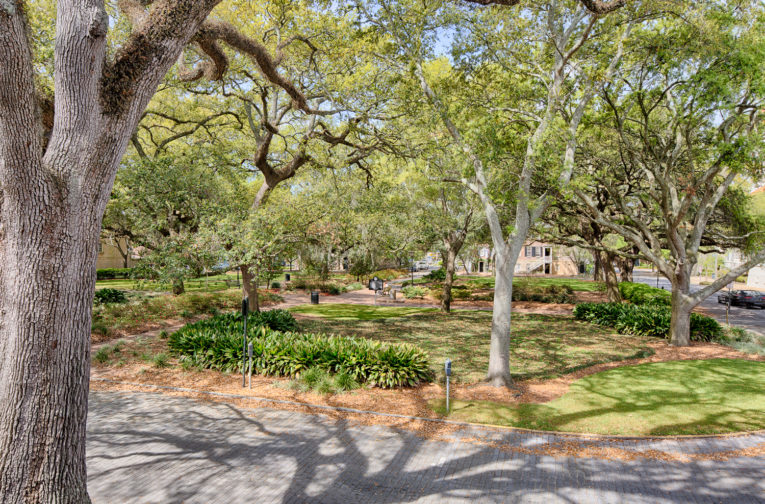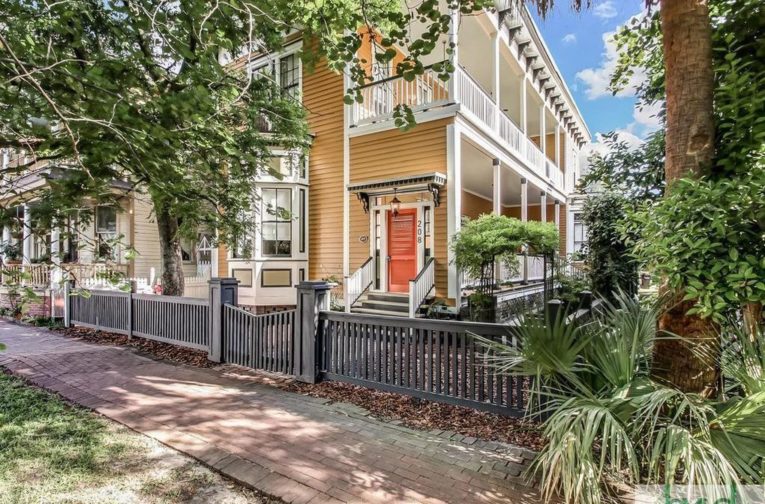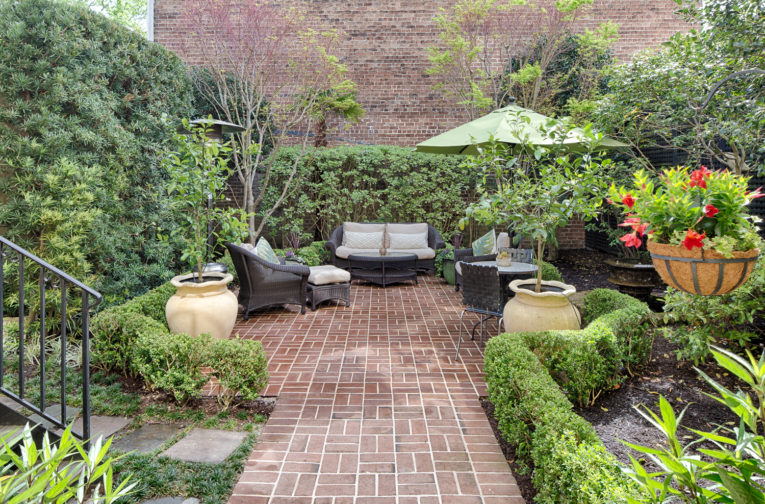One of Savannah’s most iconic downtown squares, Reynolds Square was originally named Lower New Square when it was first conceived in 1734.
This scenic square located at Abercorn Street and East St. Julian Street was designed as Savannah’s fifth square just one year after Savannah’s founding. Approximately 20 years later, the square was renamed for John Reynolds, the royal governor of the new colony of Georgia.
From Silk to Salvation
Interestingly, Reynolds Square originally served as a center of Savannah’s short-lived silk industry. In the city’s early days, the “filature,” or building where the silk was pulled from silkworm cocoons, overlooked the square on its east side. The filature was the first large public building in Georgia and, for decades, was Savannah’s largest structure.
The silk industry never got off the ground in Georgia, as the silkworms — which were dependent on non-native mulberry trees for sustenance — didn’t thrive in Savannah’s humid climate. However, a gown was made of Savannah silk for Queen Caroline, the wife of King George II of Great Britain, in the 18th century.
The former filature was eventually converted into a ballroom, and George Washington famously attended a ball there in 1791. According to a newspaper account from the time, Washington “was personally introduced to 96 ladies, who were elegantly dressed, some of whom displayed infinite taste in the emblems and devices on their sashes and head dresses, out of respect to the happy occasion.”
The central monument in the square honors John Wesley, the founder of Methodism. Wesley arrived in Savannah and became rector at Christ Church. Although his stay in Savannah was short – less than two years – it proved quite formative, as Wesley founded the Methodist denomination soon after his return to England. Under his Savannah ministry, the first Anglican hymnal in America was published. The stately bronze monument, which was sculpted by Marshall Daugherty and erected in 1969, shows Wesley in his Anglican garments as he might have looked during his ministry in Savannah.
Dining, Theater and More
The Olde Pink House, one of Savannah’s most iconic restaurants, occupies three stories on the square’s northwest corner. Originally the home of James Habersham Jr., the circa 1789 building is one of Savannah’s oldest surviving structures, having survived both great fires of 1796 and 1820, and has been meticulously restored.
Habersham was one of Savannah’s foremost advocates for American independence, and legend has it that the Pink House was where the Declaration of Independence was first read aloud in Savannah. The Olde Pink House became an acclaimed food and beverage establishment in the late 1960s after being restored by the legendary Jim Williams, a main character in John Berendt’s bestseller, Midnight in the Garden of Good and Evil.
Another signature building overlooking Reynolds Square is the Lucas Theatre, a Greek Revival, Art Deco and Neoclassical-inspired structure named after local theater purveyor and businessman Arthur Lucas. Now operated by the Savannah College of Art and Design, the Lucas was built in 1921 as a movie house, and became an extremely popular destination when it offered air conditioning a few years later — the first building in Savannah to do so.
The Lucas eventually closed in 1976 and was slated for demolition and destined to become a parking lot in the mid-1980s. However, a community-wide fundraising and awareness effort led by local attorney Mills Fleming, a descendent of Arthur Lucas, ultimately saved the building. A large donation from Kevin Spacey after he filmed the movie adaptation of Midnight in Savannah ultimately spearheaded a major renovation in 2000.
Other notable buildings on Reynolds Square include the 1813 Oliver Sturges house on the west side, which features iconic dolphin rainspouts, and the Christ Church parish house on the northeast corner, formerly the Leroy Myers cigar company.
When it comes to buying and selling residential real estate in Savannah’s National Historic Landmark District, seek the expertise of a local professional who understands historic property and what makes Savannah such a special place to call home.
Photo Credit: Casey Jones






